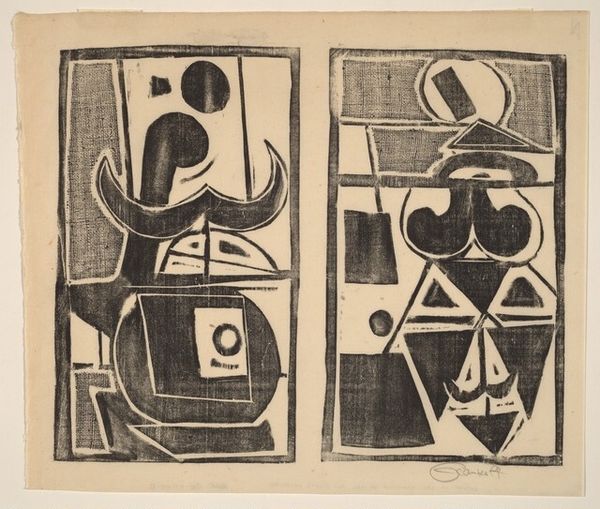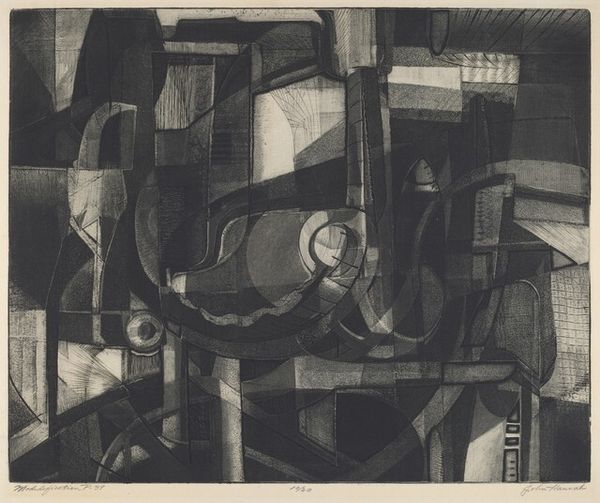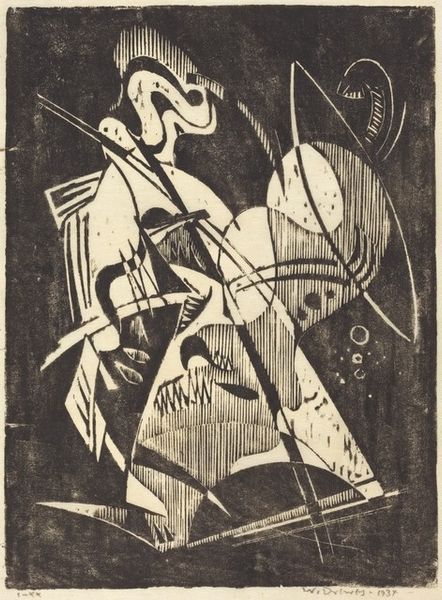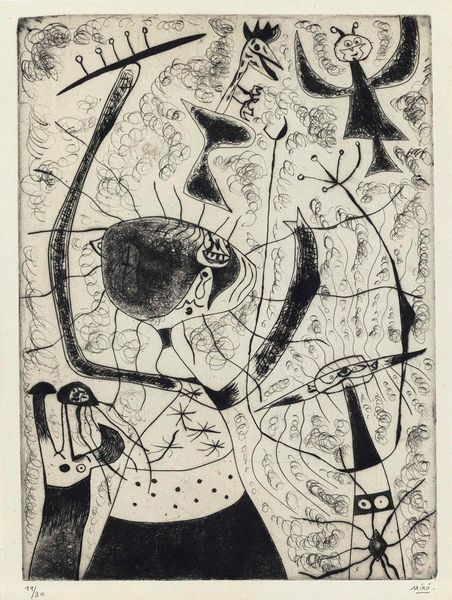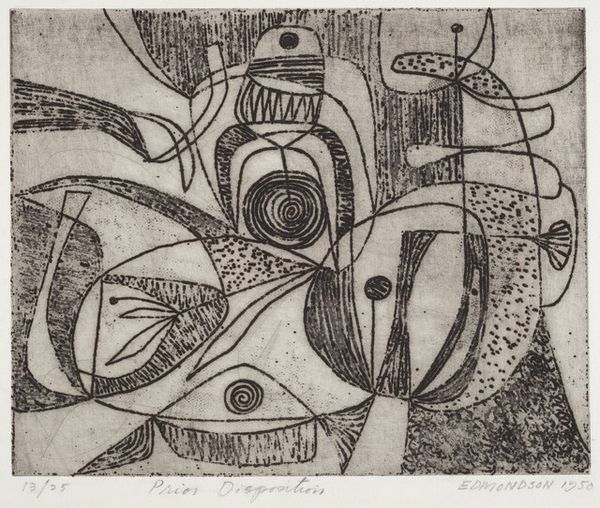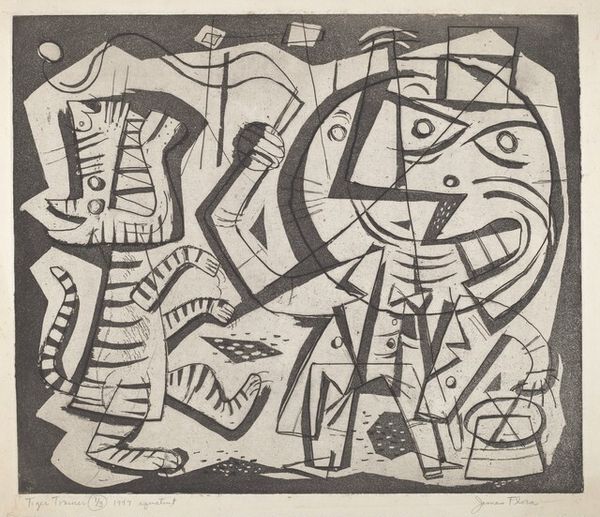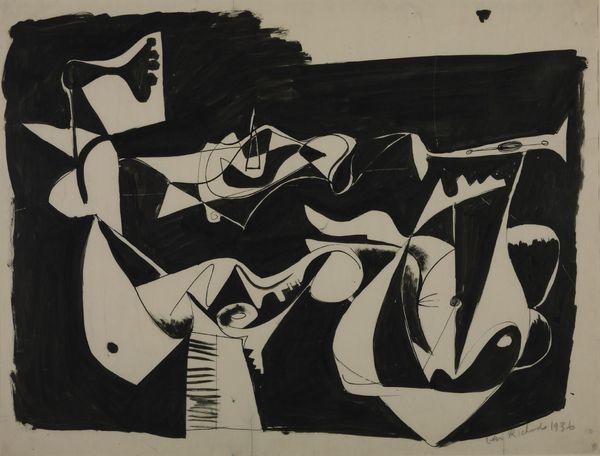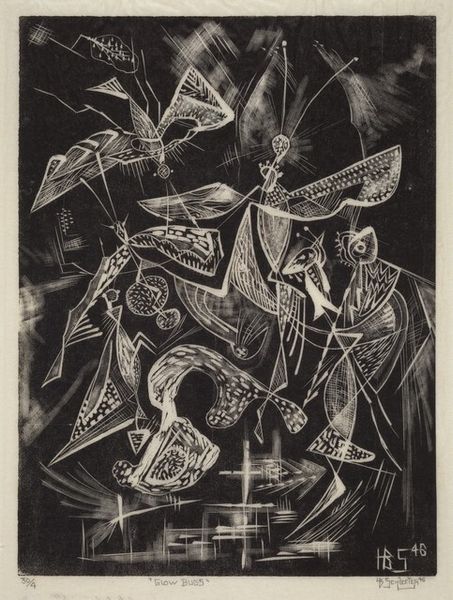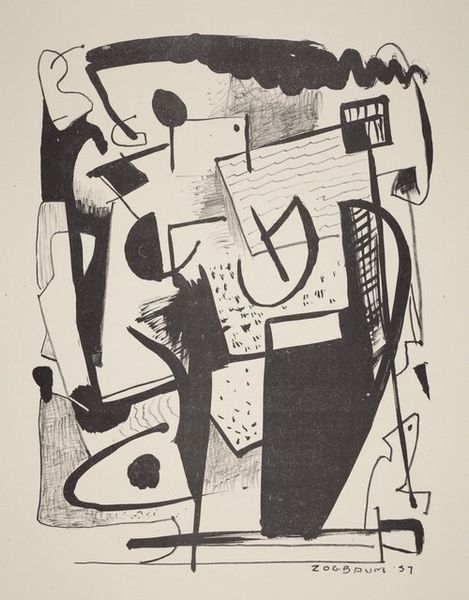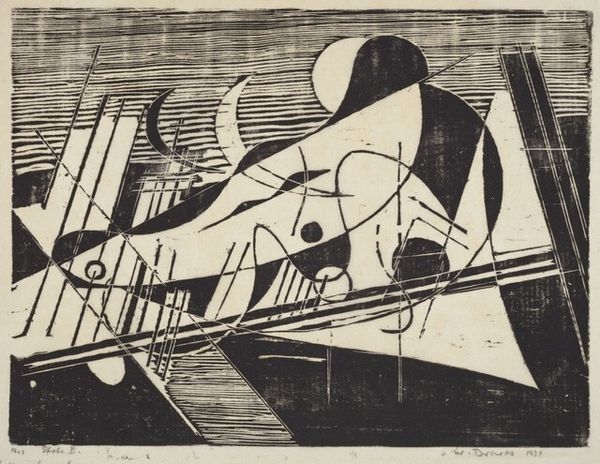
print, etching
#
abstract-expressionism
# print
#
etching
#
geometric
#
abstraction
#
line
Dimensions: image: 203 x 248 mm sheet: 286 x 337 mm
Copyright: National Gallery of Art: CC0 1.0
This is an untitled print by Alfred Russell, made using etching. Etching involves coating a metal plate with a waxy, acid-resistant substance called a ground. The artist then scratches a design into this ground, exposing the metal. When the plate is immersed in acid, the exposed lines are eaten away, creating grooves. The longer the plate sits in the acid, the deeper and darker the lines. Ink is then applied to the plate, filling these grooves. Finally, the plate is pressed onto paper, transferring the image. Here, Russell has likely employed multiple rounds of etching to achieve the tonal range, and the varied textures within the blocks of shading. Note how the incised lines, and the shapes they define, seem to float in space, against the darker, more solid background. The effect of the print depends entirely on Russell's mastery of the etching process. The careful labor involved has imbued the work with a tactile quality, a quiet energy.
Comments
No comments
Be the first to comment and join the conversation on the ultimate creative platform.


